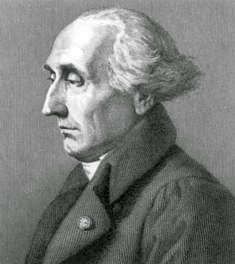The Principle of Least Action formulated by Lagrange in his monumental treatise Mecanique Analytique (1811) collecting 50 years work, is viewed to be the crown jewel of the Calculus of Newton and Leibniz as the mathematical basis of the scientific revolution:
- The equations of motion of a dynamical system are the same equations that express that the action as the integral over time of the difference of kinetic and potential energies, is stationary that is does not change under small variations.
The basic idea goes back to Leibniz:
- In change of motion, the quantity of action takes on a Maximum or Minimum.
And to Maupertis (1746):
- Whenever any action occurs in nature, the quantity of action employed in this change is the least possible.
In mathematical terms, the Principle of Least Action expresses that the trajectory $u(t)$ followed by a dynamical system over a given time interval $I$ with time coordinate $t$, is determined by the condition of stationarity of the action:
- $\frac{d}{d\epsilon}\int_I(T(u(t)+\epsilon v(t)) - V(u(t)+\epsilon v(t)))\, dt =0$,
where $T(u(t))$ is kinetic energy and $V(u(t))$ is potential energy of $u(t)$ at time $t$, and $v(t)$ is an arbitrary perturbation of $u(t)$, combined with an initial condition. In the basic case of a harmonic oscillator;
- $T(u(t))=\frac{1}{2}\dot u^2(t)$ with $\dot u=\frac{du}{dt}$,
- $V(u(t))=\frac{1}{2}u^2(t)$
- stationarity is expressed as force balance as Newton's 2nd law: $\ddot u (t) +u(t) = 0$.
The Principle of Least Action is viewed as a constructive way of deriving the equations of motion expressing force balance according to Newton's 2nd law, in situations with specific choices of coordinates for which direct establishment of the equations is tricky.
From the success in this respect the Principle of Least Action has been elevated from mathematical trick to physical principle asking Nature to arrange itself so as to keep the action stationary, as if Nature could compare the action integral for different trajectories and choose the trajectory with least action towards a teleological final cause, while in fact Nature can only respond to forces as expressed in equations of motion.
But if Nature does not have the capability of evaluating and comparing action integrals, it can be misleading to think this way. In the worst case it leads to invention of physics without real meaning, which is acknowledged by Lagrange in the Preface to Mecanique Analytique.
The ultimate example is the very foundation of quantum physics as the pillar of modern physics based on a concept of elementary (smallest) quantum of action denoted by $h$ and named Planck's constant with dimension $force \times time$. Physicists are trained to view the elementary quantum of action to represent a "quantization" of reality expressed as follows on Wikipedia:
The ultimate example is the very foundation of quantum physics as the pillar of modern physics based on a concept of elementary (smallest) quantum of action denoted by $h$ and named Planck's constant with dimension $force \times time$. Physicists are trained to view the elementary quantum of action to represent a "quantization" of reality expressed as follows on Wikipedia:
- In physics, a quantum (plural: quanta) is the minimum amount of any physical entity involved in an interaction.
- Behind this, one finds the fundamental notion that a physical property may be "quantized," referred to as "the hypothesis of quantization".This means that the magnitude can take on only certain discrete values.
- A photon is a single quantum of light, and is referred to as a "light quantum".
In the quantum world light consists of a stream of discrete light quanta named photons. Although Einstein in his 1905 article on the photoelectric effect found it useful as a heuristic idea to speak about light quanta, he later changed mind:
- The quanta really are a hopeless mess. (to Pauli)
- All these fifty years of conscious brooding have brought me no nearer to the answer to the question, 'What are light quanta?' Nowadays every Tom, Dick and Harry thinks he knows it, but he is mistaken. (1954)
But nobody listened to Einstein and there we are today with an elementary quantum of action which is viewed as the basis of modern physics but has not physical reality. Schrödinger supported by Einstein said:
- There are no particles or quanta. All is waves.
Connecting to the previous post, note that to compute a solution according the Principle of Least Action typically an iterative method based on relaxation of the equations of motion is used, which has a physical meaning as response to imbalance of forces. This shows the strong connection between computational mathematics as iterative time-stepping and analog physics as motion in time subject to forces, which can be seen as a mindless evolution towards a hidden final cause, as if directed by an invisible hand of a mind understanding the final cause.

Inga kommentarer:
Skicka en kommentar